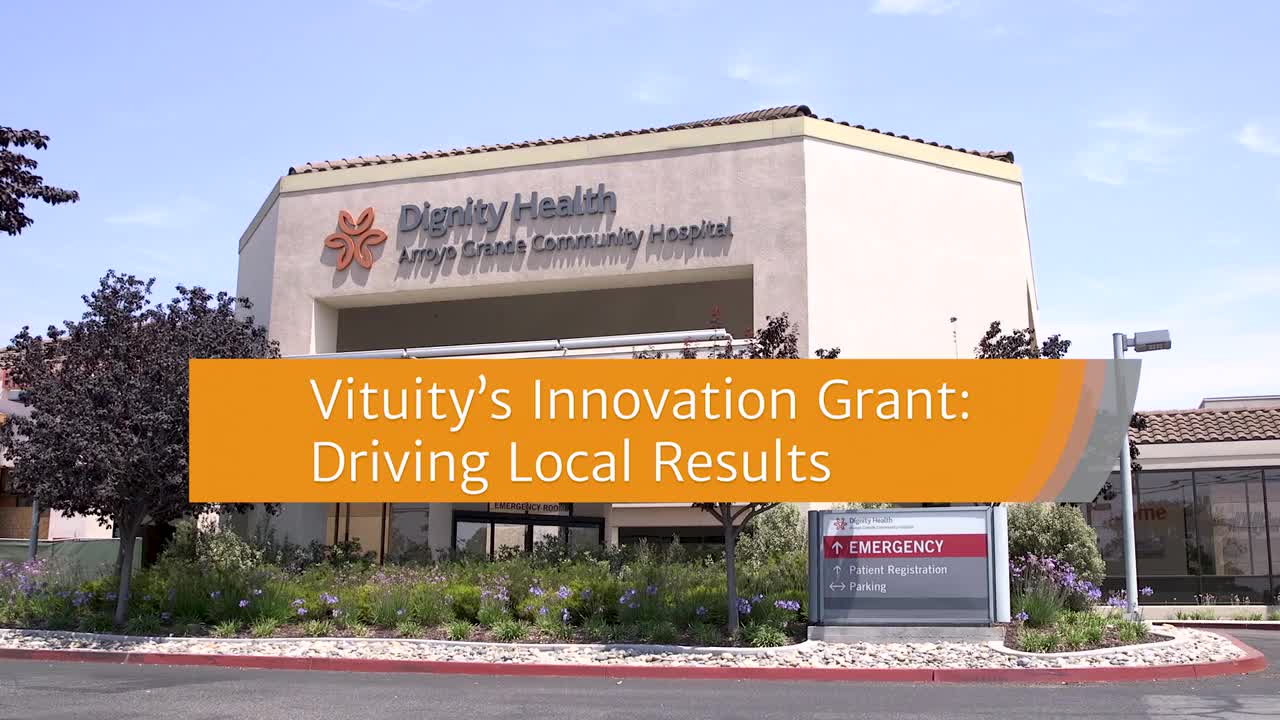
Electronic health records (EHRs) have many benefits, but they've often had a negative impact on productivity. Providers at many hospitals must now open dozens to hundreds of charts a day simply to check their lab test results. This cumbersome process gobbles up time while greatly increasing the risk of medical errors and care delays.
David Griffith, MD, an emergency physician at Arroyo Grande Community Hospital (Calif.) believed his team could do better. So with the support of a Vituity Innovation Grant, he developed a Microbiology Culture Management System. Now ED providers can easily view and manage their lab results in a single screen, freeing them to spend more time caring for patients.
To hear Dr. Griffith's story in his own words, watch the video or read the transcript below.
To learn about all the ways Vituity is transforming the business and practice of healthcare and how we can help to bring the latest care delivery innovations to your health system, visit www.vituity.com or contact us at solutions@vituity.com.
Transcript
Location: Arroyo Grande Community Hospital Emergency Department (Calif.)
Speakers:
- Juan Reynoso, Jr., MD, Regional Director, Vituity
- David Griffith, MD, Emergency Physician, Vituity
- Janet Young, MD; Vice President of Operations, Emergency Medicine; Vituity
- Rick Newell, MD, Chief Transformation Officer, Vituity
- Margaux Snider, MD, Emergency Department Medical Director, Vituity
- Dan Culhane, MD; Vice President of Operations, Emergency Medicine; Vituity
- Matthew Scales, MD, Emergency Physician, Vituity
- Villa Infanto, RN, MBA; Vice President, Patient Care; Arroyo Grande
Juan Reynoso Jr: I'm very grateful for our Innovation Grant that we have within the organization.
David Griffith: The Innovation Grant first and foremost gave me financial support in order to take time away from my clinical shifts to be able to dedicate time to this project. When I took over the job of doing the cultures for our group, it was fairly tedious, cumbersome, and flawed.
Juan Reynoso Jr: I think our microbiology culture management process that Dr. Griffith has been able to explore is a perfect example of who we are.
Janet Young: He identified a systematic problem, and even better, he came up with a solution.
Rick Newell: This is what led us to develop the Innovation Grant three years ago to build out and roll out frontline-driven solutions that aim to improve the patient experience, enhance clinical integration and care coordination, and further transform care delivery.
Juan Reynoso Jr: All hospital-based physicians are now heavily reliant on the electronic medical records system. Those systems are not without their own faults and problems. In the past, pending lab test results such as blood cultures that were drawn in the emergency department were falling off the list. This happens not just here but in every EMR in every healthcare system.
We are not afraid of taking ideas from any of our partners or advanced providers and sharing them with our hospital partners.
David Griffith: [Sitting at a desk with two computer monitors.] Welcome to the old system. When I was tasked with this job four years ago, this is what I was faced with every day. [Points to one monitor.] This is everybody who's had a lab test sent from our ED. This patient here has a normal urine culture, but this patient here has a positive urine culture, and there's absolutely no way for me to know that without opening their charts. [Clicks the mouse and waits. Chart loads on the second monitor.]
I have to wait for it to load. It loads up on the wrong screen. I have to change to the results screen, and then I have to go to the right tab to find out what the result is, and then I have to open the result. And then finally, I see that it doesn't matter. The patient's test is negative.
Margaux Snider: If you can think about how practical that is for your daily life, it's ridiculous. I mean, you would be opening sometimes a hundred charts a day. That's very time consuming.
David Griffith: The new way is called "the pool." [Refreshes the computer screen.] You can see that there are five people on the list now. And I can see whether the results are finished or whether they're still in progress, meaning there's no reason to open them up. I can see what kind of test was sent. So if there's a blood culture that's positive, I can see it right away. Boom. That's a blood culture, I need to check that out.
Dan Culhane: This takes a process that was very labor-intensive and paper-intensive and focuses it in a very concise way. It makes the practice better. It makes this a better place to work, and that's really important.
David Griffith: Right off the bat, I sit down to do my work every morning, and I can immediately see the [cases] that are most important for me to work on. I'll get right on those, as opposed to wading through what would have been 90 charts for both of my hospitals combined.
Matthew Scales: A lot of the burden, a lot of the risk has been taken away. Bad outcomes around culture results have plummeted. We hardly ever have any issues.
Villa Infanto: A lot of innovation comes up because there was some type of frustration at the beginning. We say, how can we do this better? And we were supported in this effort by Vituity, Dignity Health, and also the hospital in general. They said, "Yes, you need to move forward, because this is a process that we all are faced with. What can you do to help make it better?"
David Griffith: It was really only the freedom that Vituity gave my site over our own resources that allowed them to task me with this and make it happen.
Dan Culhane: There's no doubt that Dr. Griffith's use of this tool and the way he, as a doctor, uses it with patients has saved lives.
Villa Infanto: This is an innovation that is very unique to the Central Coast, and it should be spread out through the hospitals at Dignity Health and other emergency rooms that utilize Vituity.
To learn about all the ways Vituity is transforming the business and practice of healthcare and how we can help to bring the latest care delivery innovations to your health system, visit www.vituity.com or contact us at solutions@vituity.com.
Originally published Jan. 22, 2019.























